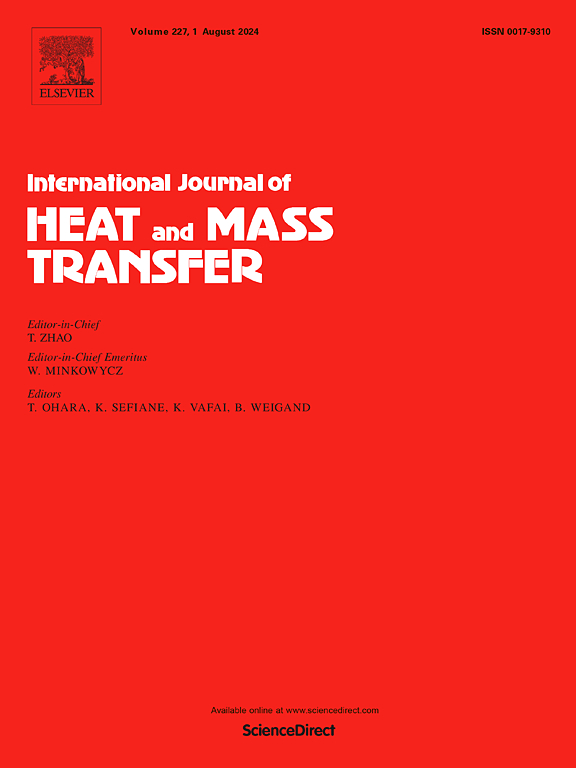The heat transfer characteristics at three forms of Oil-on-Water mist in a wide temperature range
IF 5
2区 工程技术
Q1 ENGINEERING, MECHANICAL
International Journal of Heat and Mass Transfer
Pub Date : 2025-02-23
DOI:10.1016/j.ijheatmasstransfer.2025.126825
引用次数: 0
Abstract
The spray cooling method has emerged in response to the problems of low cooling efficiency and waste of coolant in flooding cooling. This paper established a convectional heat transfer model of Oil-on-Water mist, and experimentally determined the hemispherical effective emissivity and convectional heat transfer coefficient of nickel based superalloy, carbide coated by TiAlN, and silicon nitride ceramics in different temperatures (-30 °C, 20 °C, 150 °C) at the Oil-on-Water mist condition. The cooling process of the sample starting from 1000 °C has been observed by the numerical simulation based on the convectional heat transfer coefficient. The experimental results showed that samples were reheated during the cooling process. The simulation results showed that the particle diameter of the high temperature Oil-on-Water mist is the smallest, ranging from 0.92 μm to 1.22 μm, followed by the normal temperature Oil-on-Water mist, and the low temperature Oil-on-Water mist is the largest. The distribution of sample surface temperature is the most uniform in the high temperature Oil-on-Water mist condition. The liquid film on the surface of the sample is distributed in a circular form, with the thinnest liquid film at the center and edges.

求助全文
约1分钟内获得全文
求助全文
来源期刊
CiteScore
10.30
自引率
13.50%
发文量
1319
审稿时长
41 days
期刊介绍:
International Journal of Heat and Mass Transfer is the vehicle for the exchange of basic ideas in heat and mass transfer between research workers and engineers throughout the world. It focuses on both analytical and experimental research, with an emphasis on contributions which increase the basic understanding of transfer processes and their application to engineering problems.
Topics include:
-New methods of measuring and/or correlating transport-property data
-Energy engineering
-Environmental applications of heat and/or mass transfer

 求助内容:
求助内容: 应助结果提醒方式:
应助结果提醒方式:


